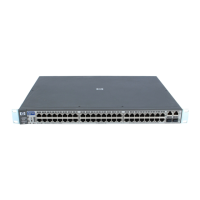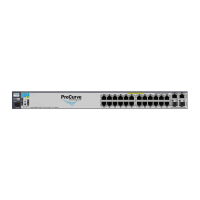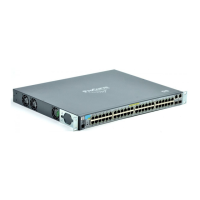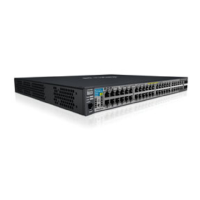15-9
IP Routing Features
Configuring IP Parameters for Routing Switches
routers, including HP routing switches, can be configured to reply to ARP
requests from one network on behalf of devices on another network. See
“Enabling Proxy ARP” below.
Note If the routing switch receives an ARP request packet that it is unable to deliver
to the final destination because of the ARP timeout and no ARP response is
received (the routing switch knows of no route to the destination address),
the routing switch sends an ICMP Host Unreachable message to the source.
Enabling Proxy ARP
Proxy ARP allows a routing switch to answer ARP requests from devices on
one network on behalf of devices in another network. Since ARP requests are
MAC-layer broadcasts, they reach only the devices that are directly connected
to the sender of the ARP request. Thus, ARP requests do not cross routers.
For example, if Proxy ARP is enabled on a routing switch connected to two
sub-nets, 10.10.10.0/24 and 20.20.20.0/24, the routing switch can respond to an
ARP request from 10.10.10.69 for the MAC address of the device with IP
address 20.20.20.69. In standard ARP, a request from a device in the 10.10.10.0/
24 sub-net cannot reach a device in the 20.20.20.0 sub-net if the sub-nets are
on different network cables, and thus is not answered.
An ARP request from one sub-net can reach another sub-net when both sub-
nets are on the same physical segment (Ethernet cable), since MAC-layer
broadcasts reach all the devices on the segment.
Proxy ARP is disabled by default on HP routing switches. To enable Proxy
ARP, enter the following commands from the VLAN context level in the CLI:
HPswitch(config)# vlan 1
HPswitch(vlan-1)# ip proxy-arp
To again disable IP proxy ARP, enter the following command:
HPswitch(vlan-1)# no ip proxy-arp
Syntax: [no] ip proxy-arp
!Software.book Page 9 Thursday, October 10, 2002 6:10 PM
